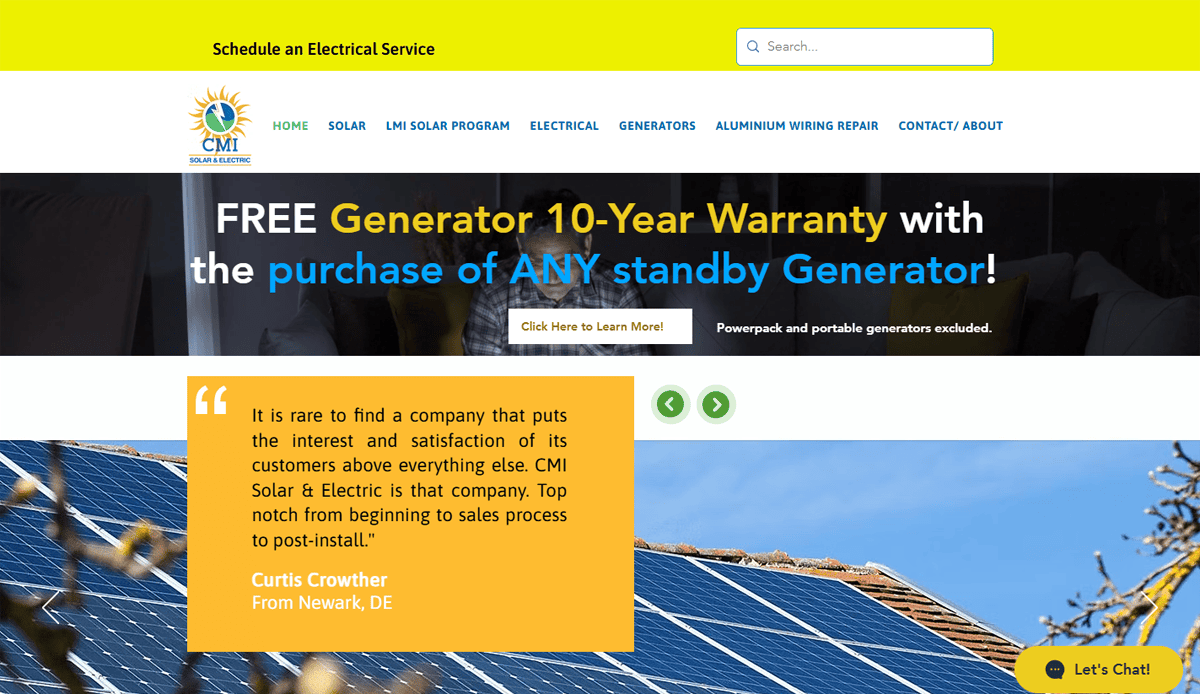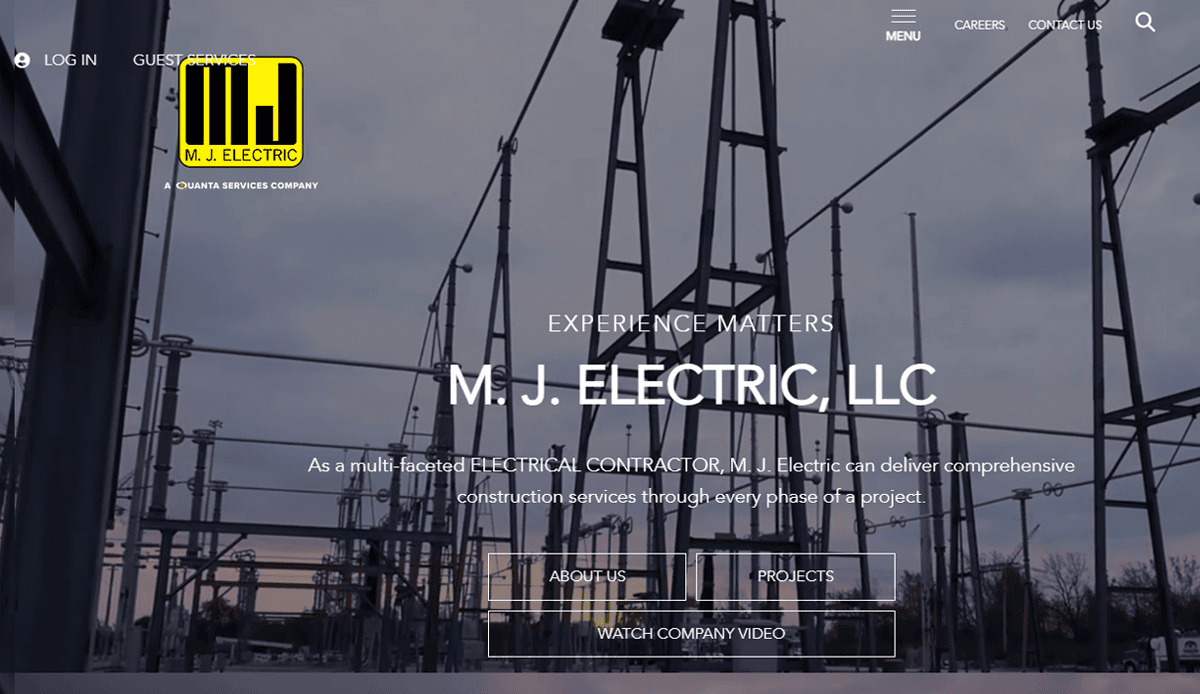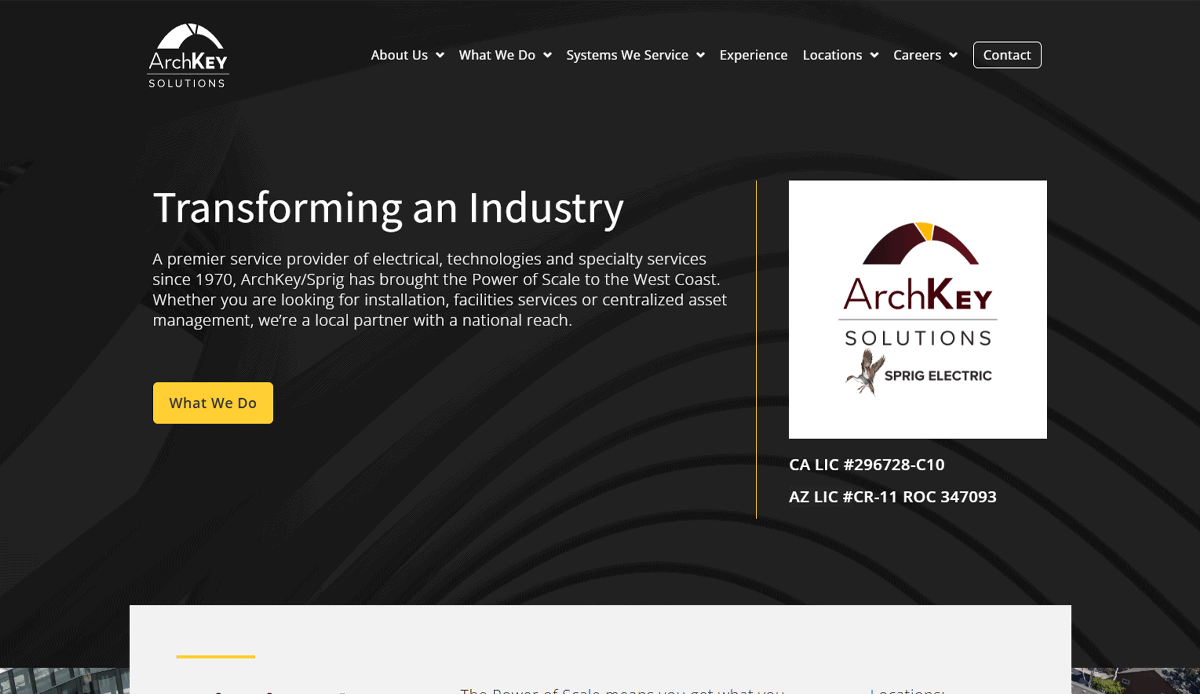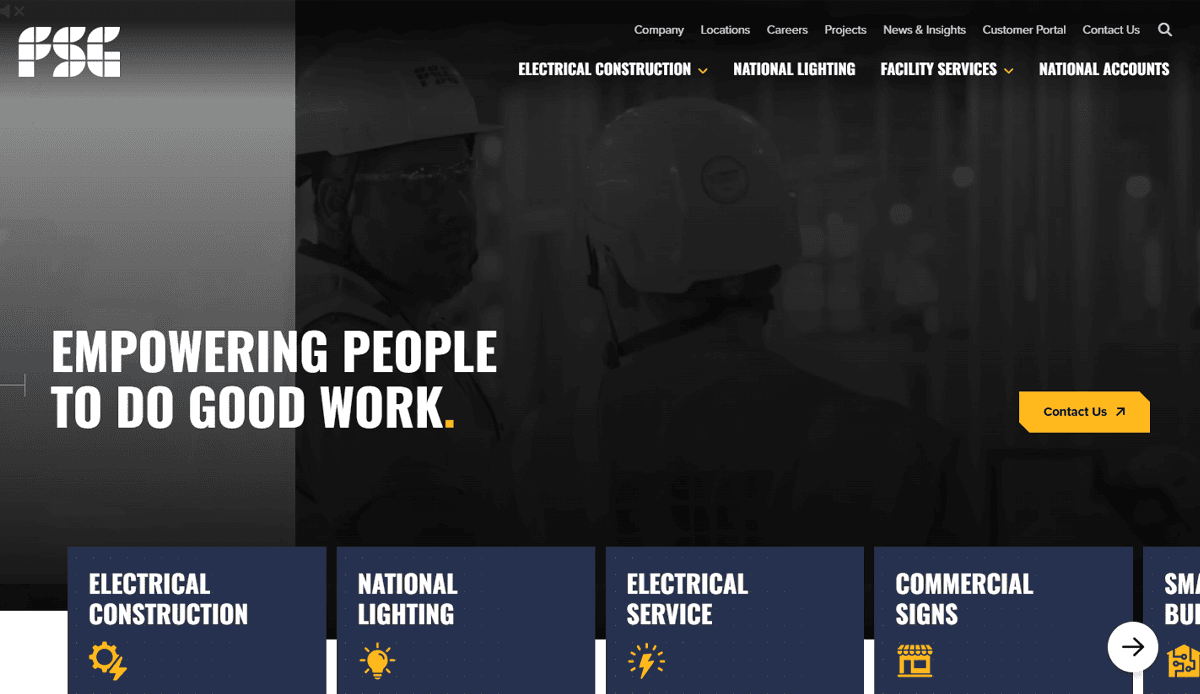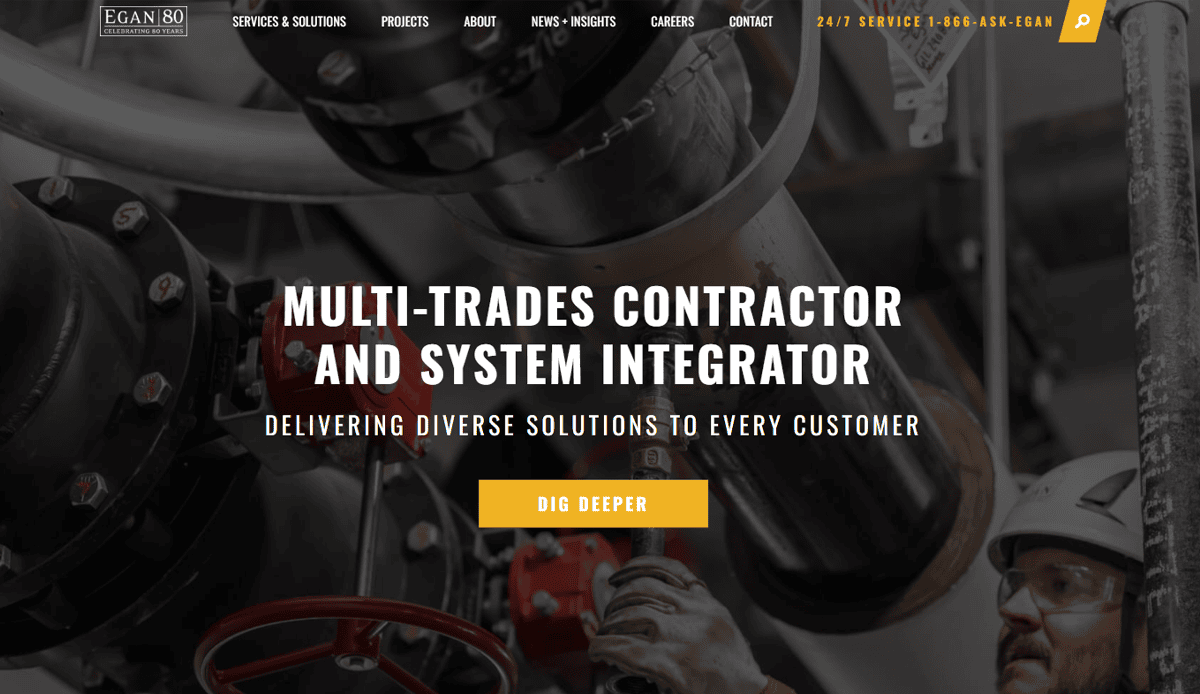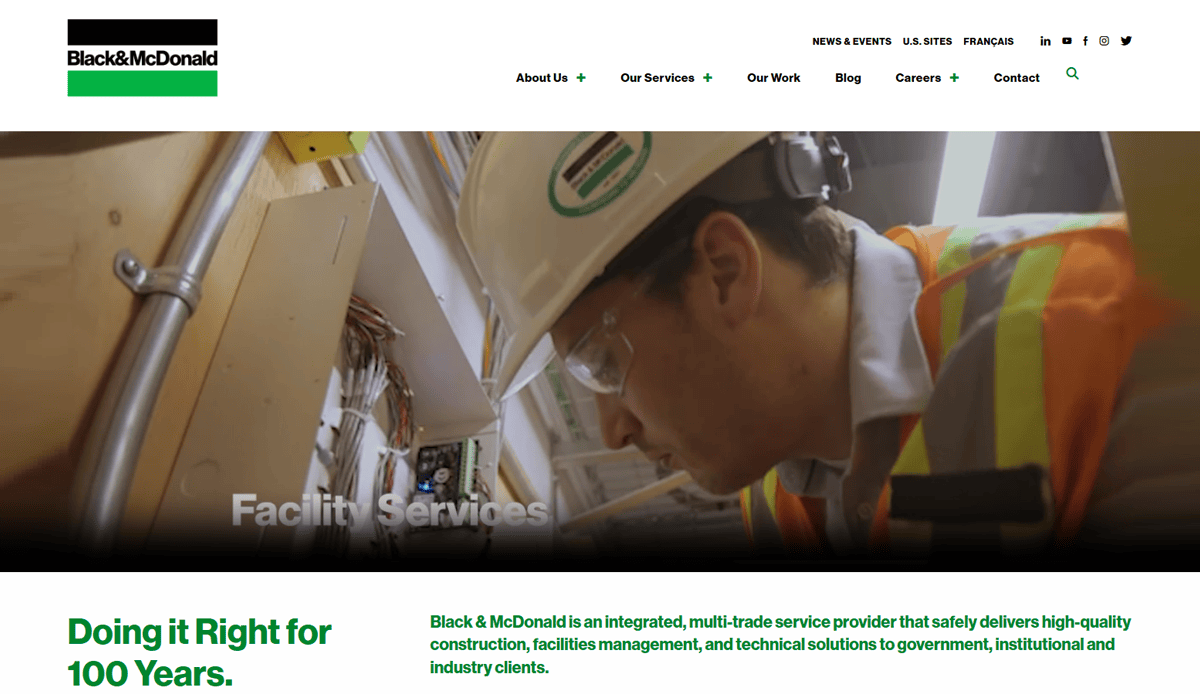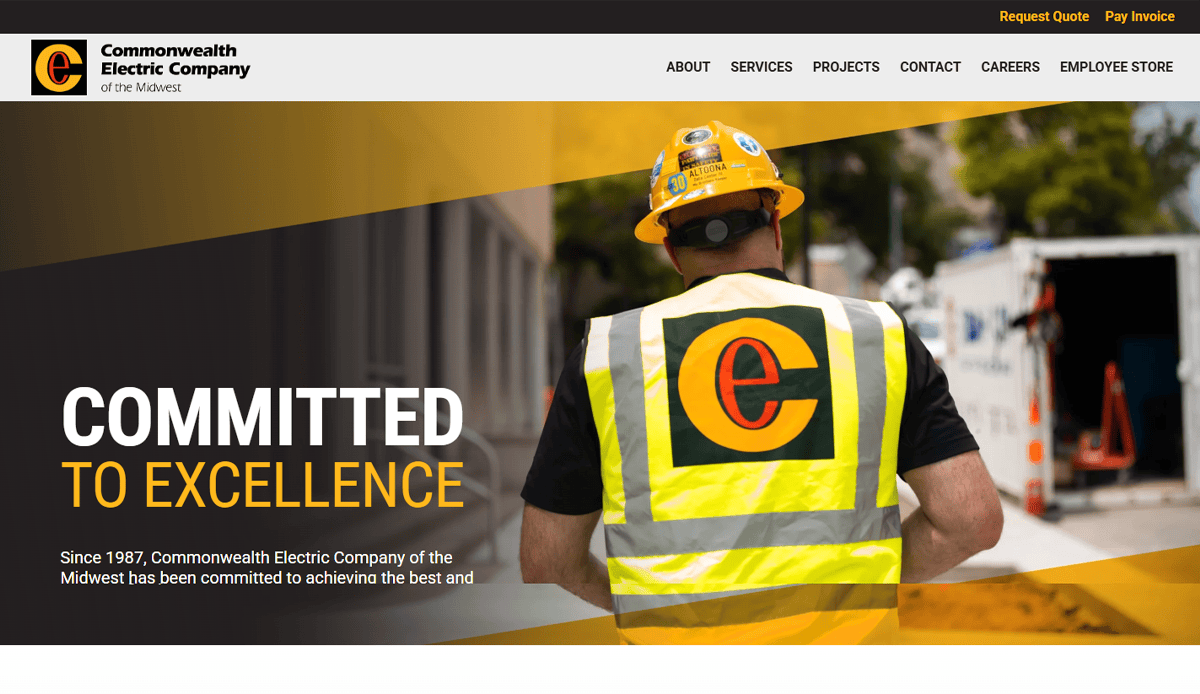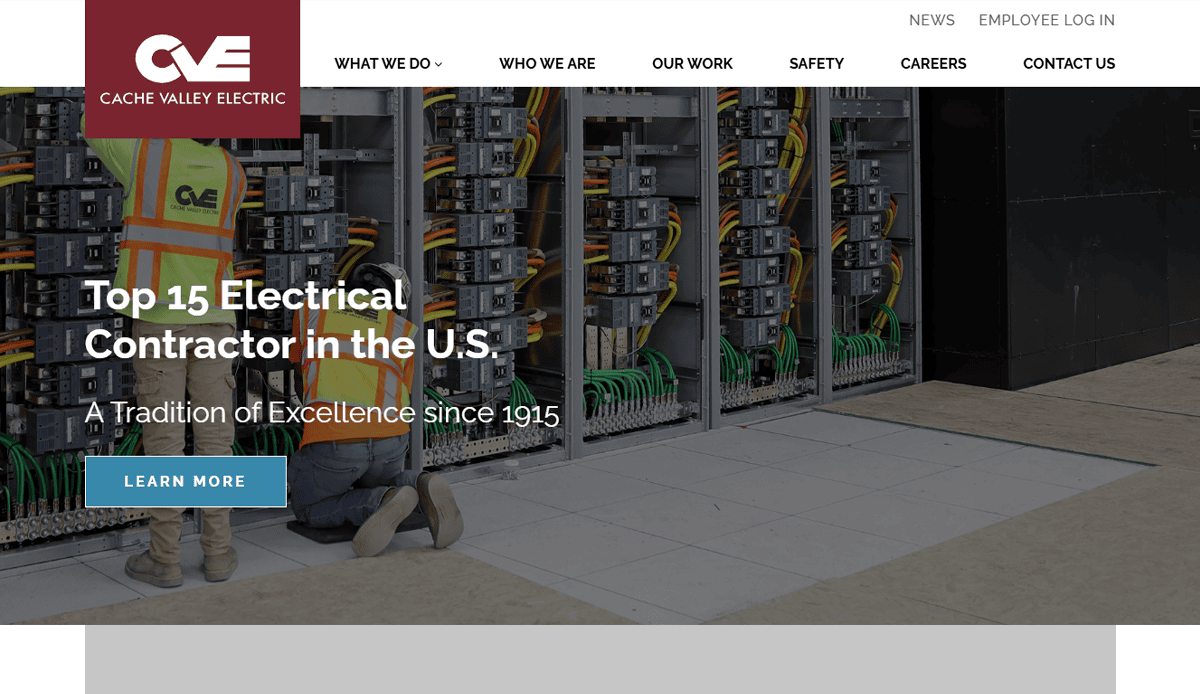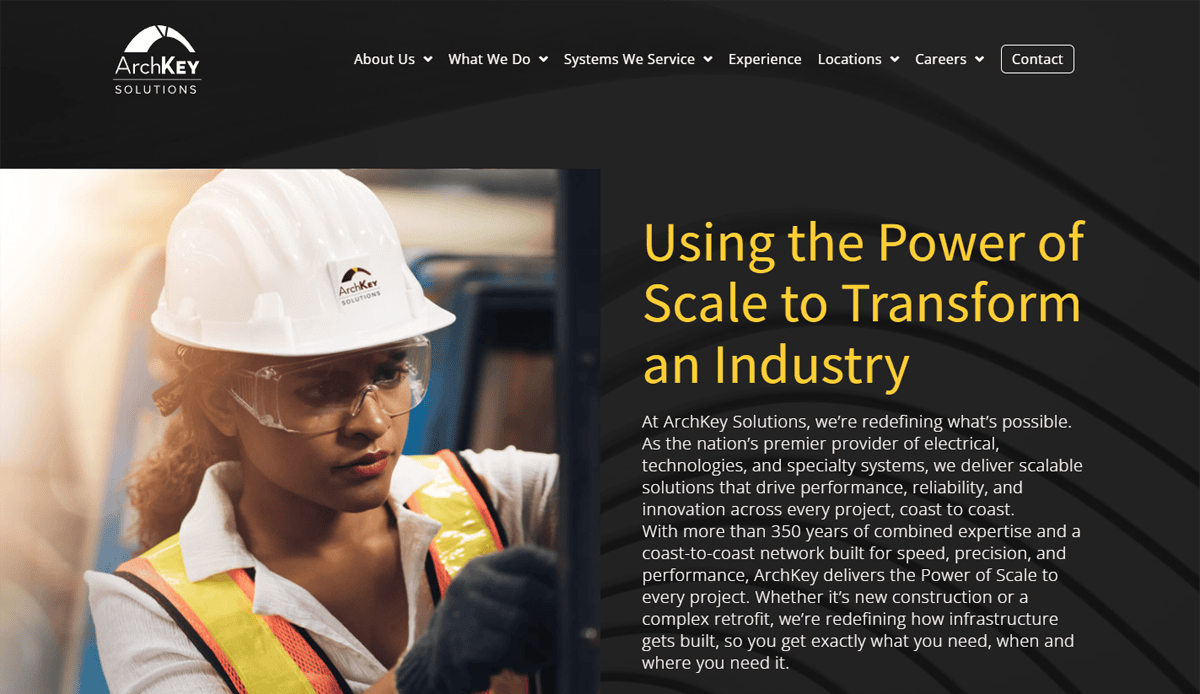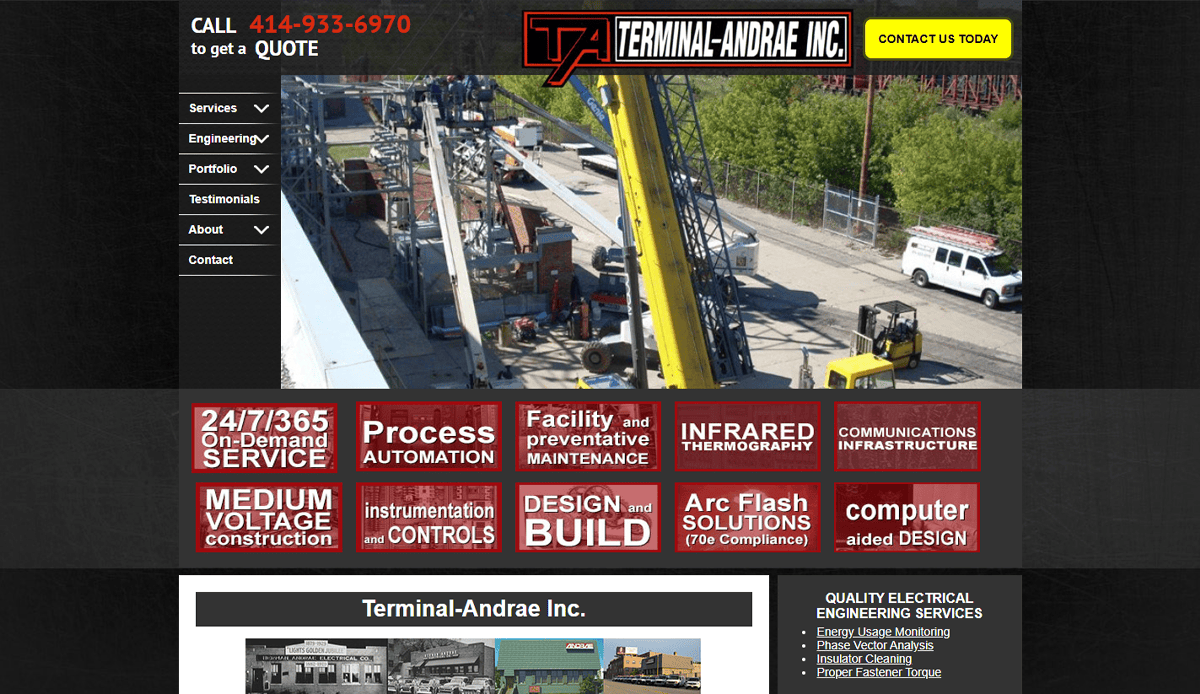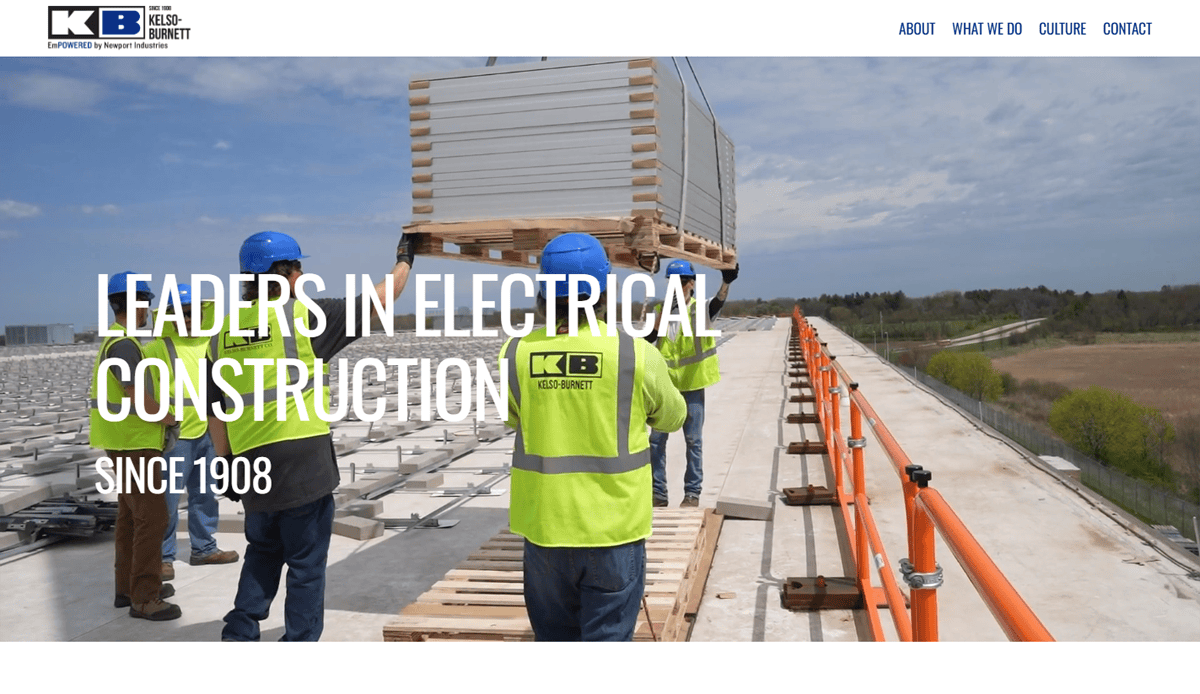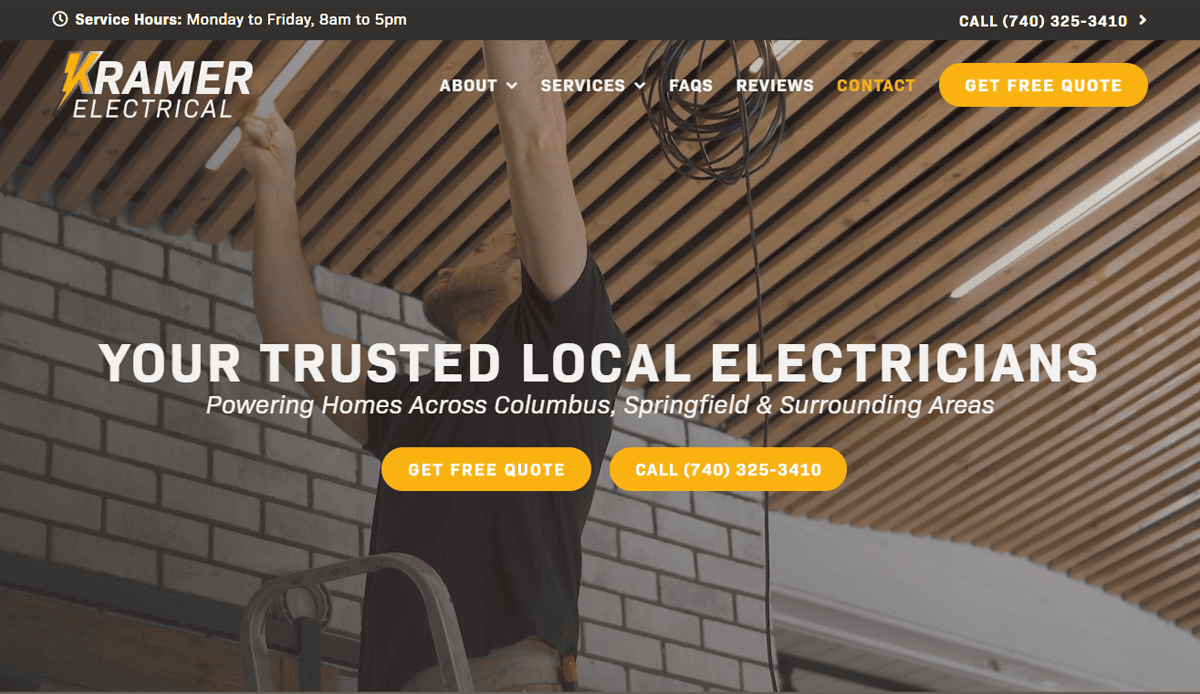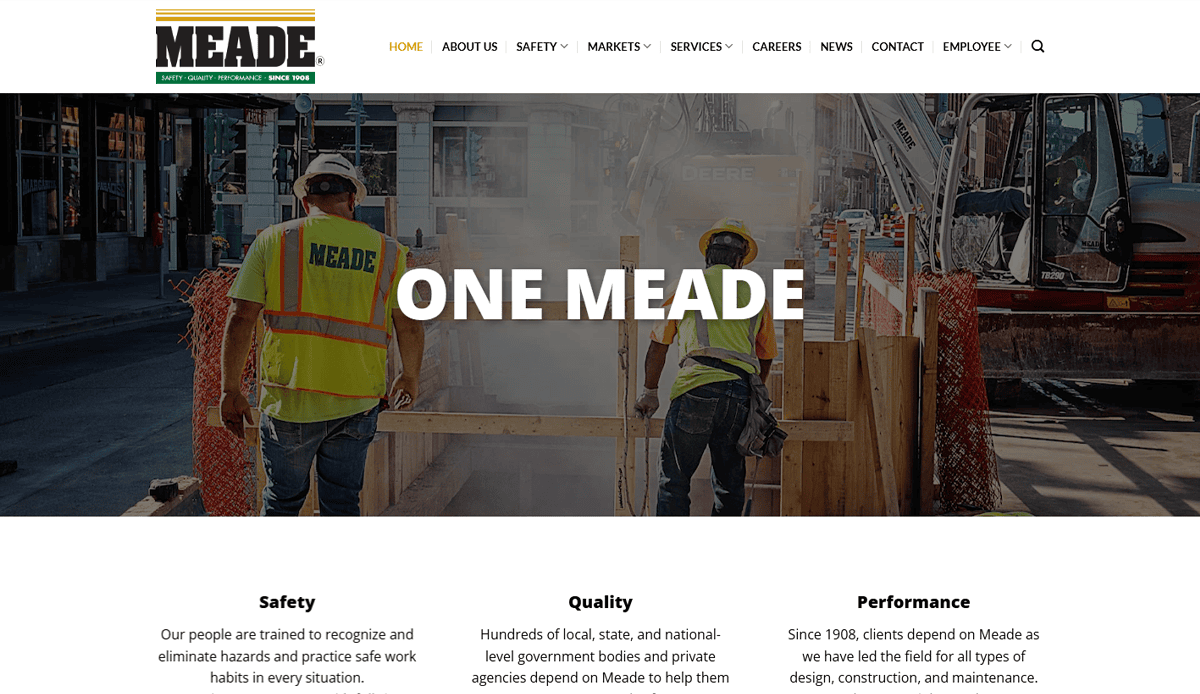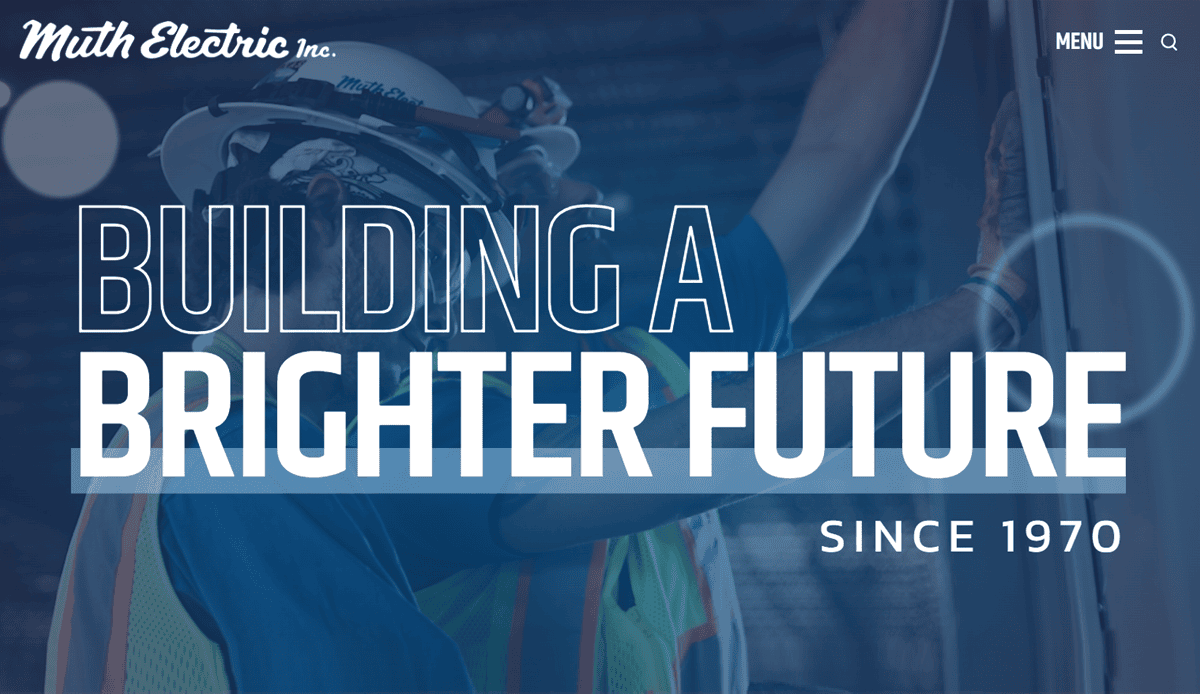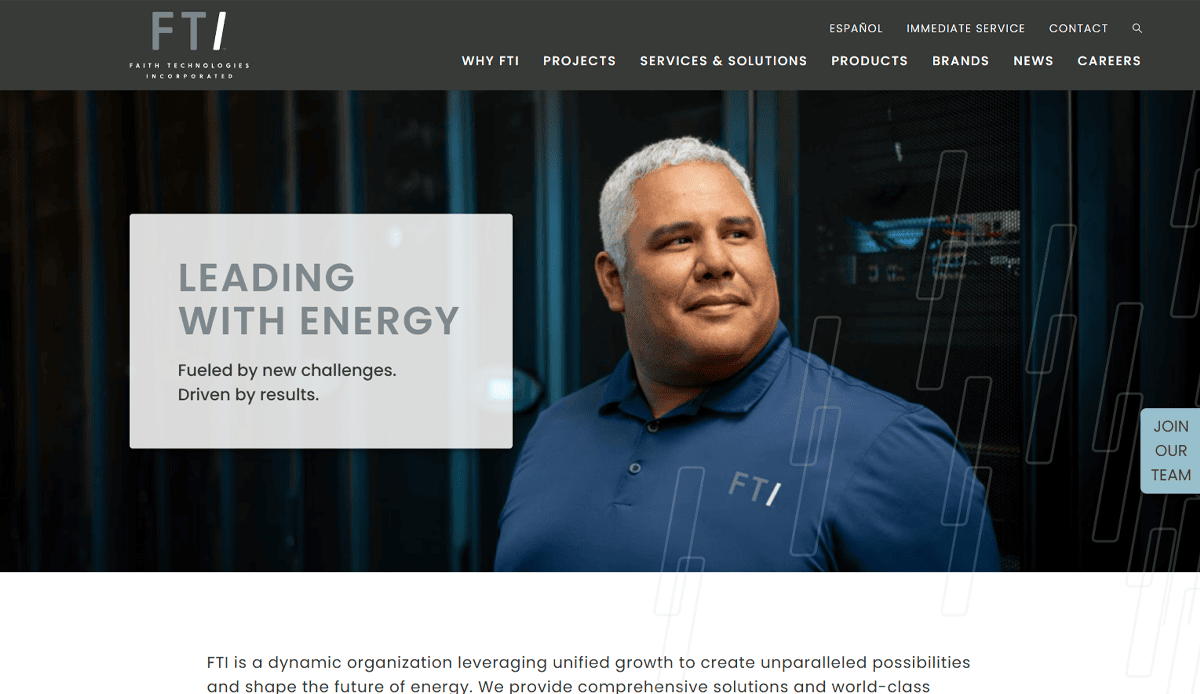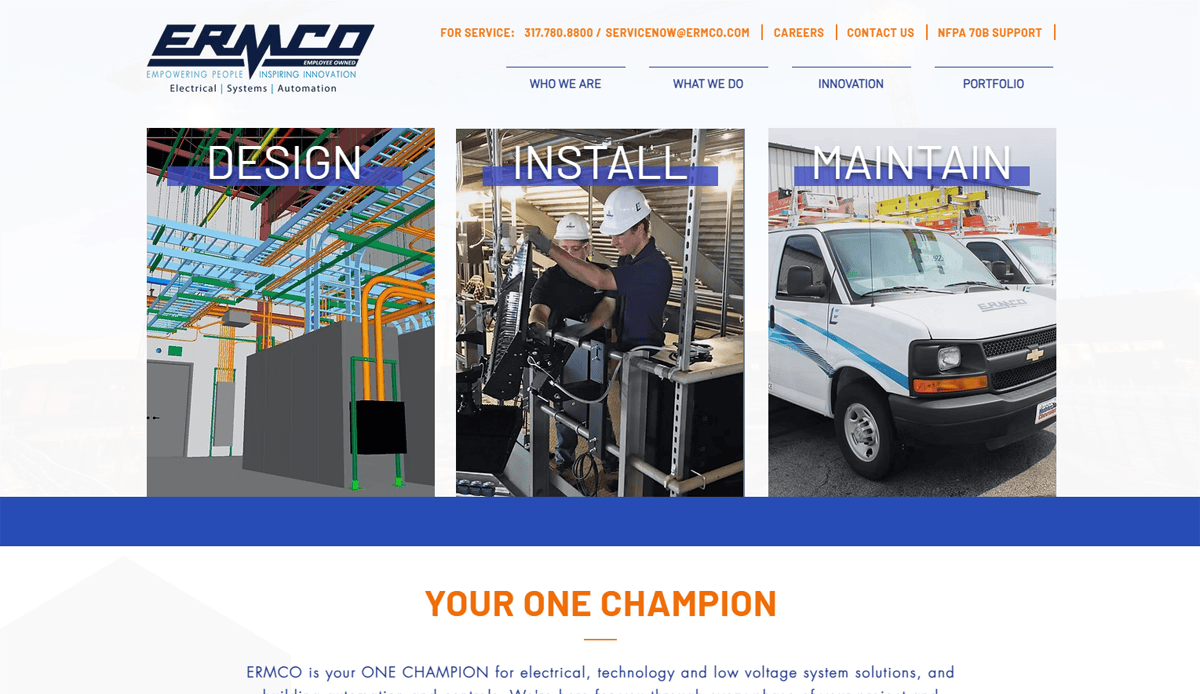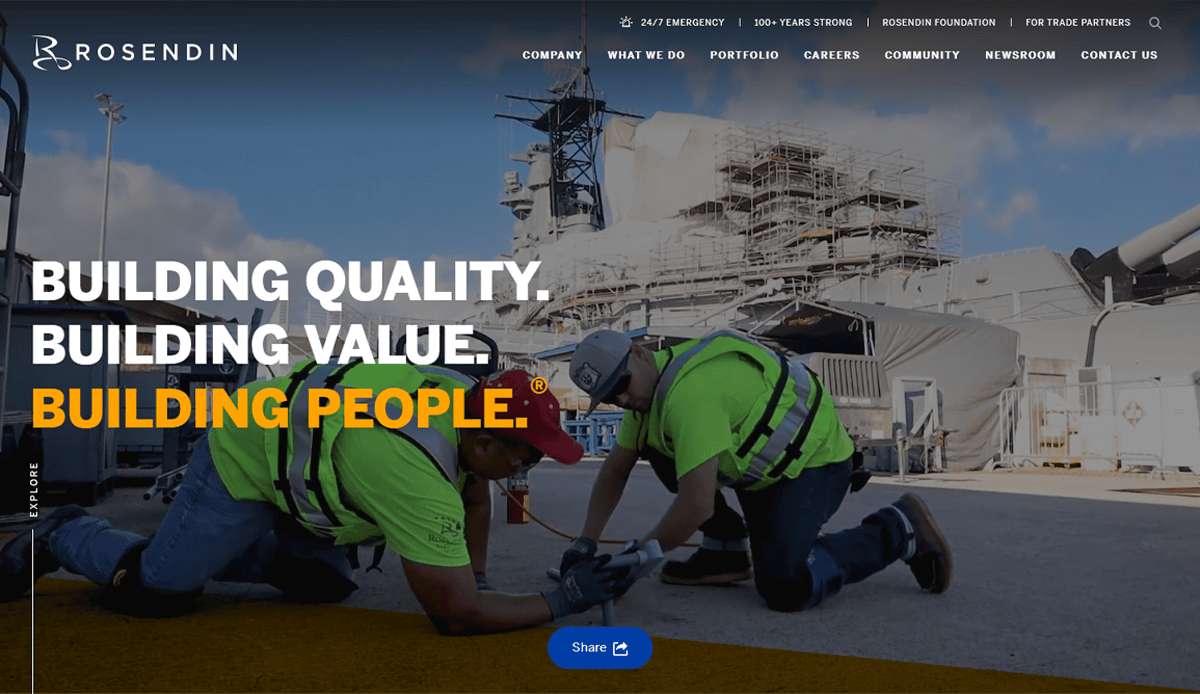Just looking for our Best Commercial Electrician Website examples list?
Key Takeaways:
- Your Website Is Your Strongest Lead Tool
A high-quality, user-friendly design makes it easier for potential clients to understand your services, trust your professionalism, and take the next step. - User Experience (UX) Drives Conversions
Clean navigation, fast load times, and a mobile-first layout ensure that every visitor gets what they need—quickly. This keeps leads from bouncing and helps your business stay top-of-mind. - Clear Service Descriptions Build Trust
Detailing your electrical services, including commercial and industrial electrical specialties, gives potential customers confidence in your expertise. - Strong CTAs and Contact Forms Turn Interest Into Action
Every website should be equipped with an easy-to-find, no-friction contact form. Make it simple for users to get in touch—and see real results. - Local SEO Helps You Rank Where It Matters
Search engine optimization for websites ensures your business shows up in the right searches at the right time, helping local clients find and choose you. - Testimonials Showcase Trust and Reliability
Featuring client feedback helps build trust quickly. A strong testimonial from a happy client can speak louder than any tagline. - A Top-Performing Website Reflects a Great Business
Your online presence should reflect the quality of your work. Design, copy, structure—it all plays a role in telling potential customers that you’re the electrician they can count on.
Why Every Electrical Contractor Needs a Great Website to Stand Out
Your website is more than a digital business card—it’s your most important sales tool. For an electrical contractor, it can be the difference between being passed over or getting the call for a major commercial project. A memorable website doesn’t just look good; it drives leads, builds trust, and sets the tone for your professionalism.
If your online presence looks outdated or lacks a clear message, you’re losing more than just style points—you’re losing real business. Your site needs to capture attention, answer questions, and convert visitors into booked appointments. With strong electrician website design, even a single page optimized with the right contact form, service descriptions, and user experience can transform how a potential client sees your electrical services.
In this guide, we’ll walk you through how to craft a high-performing, user-friendly website tailored for commercial electricians. From design and layout strategies to seo and testimonials, this blog breaks down every element needed to connect with your ideal potential customer—and turn clicks into contracts.
Website Planning & Purpose for Electrical Contractors
Before design begins, every successful website starts with strategic planning. This phase is essential for defining how your site will function, who it will serve, and what goals it needs to achieve.
For an electrical contractor, this means clarifying your service offerings—commercial wiring, emergency response, industrial electrical systems—and determining how each should be represented online. A clear site architecture supports intuitive navigation, helping potential clients quickly find the information they need.
Establishing your goals upfront is critical. Do you want to increase consultation requests? Highlight your team’s certifications? Attract facility managers searching for long-term electrical partners? Your site structure, copywriting, and calls to action should directly support these objectives.
Another key consideration is aligning your website with how real customers search and make decisions. Think beyond aesthetics. Your homepage, service pages, and even your about page should anticipate the questions your audience is asking—and provide answers backed by credibility.
And finally, don’t build in a vacuum. Conduct competitive research and gather inspiration from leading examples of top-performing sites. Our Electrician Website Design Guide includes insight into common planning missteps and how to build a purpose-driven site that performs.
Design Principles for High-Performing Websites
Once your website planning is complete, it’s time to bring it to life with intentional, high-impact design. Company websites must balance visual professionalism with functionality—everything should support the end goal of generating qualified leads.
The first principle is clarity. Visitors should immediately understand what your electrical business offers and how to take the next step. This means bold headlines, concise descriptions of service, and simple navigation. Avoid visual clutter that forces users to work harder than necessary.
Next is consistency. Use a cohesive color palette, uniform button styles, and repeating visual elements to reinforce brand recognition and trust. Consistency in layout across pages helps users feel comfortable navigating your site, increasing the likelihood they’ll convert.
Responsiveness is critical. Your site must work flawlessly on mobile phones and tablets, not just desktops. Many commercial inquiries originate from field managers or facility supervisors using their phones on job sites. Mobile-friendly layouts, fast-loading pages, and accessible touchpoints are non-negotiable.
Visual hierarchy guides user behavior. Prioritize key actions—like scheduling a consultation or calling for emergency services—using contrasting button colors and strategic placement above the fold. Every scroll should lead to another conversion opportunity.
Lastly, design must serve credibility. Professional photography, client logos, and industry badges reinforce trust. Testimonials and real project images show that your team delivers on its promises. These trust signals should be featured prominently throughout your site.
For more insight into designing websites that convert, check out our breakdown of High-Converting Electrician Websites and learn how design choices can directly impact your bottom line.
Content & Navigation Structure for Successful Sites
Effective website content and navigation are the bridge between visitor interest and actual inquiries. Every page should have a clear purpose and support the user journey from discovery to contact.
Start with a homepage that immediately communicates your core services and value proposition. Your headline should clearly state what type of electrical services you offer and who you serve—commercial, industrial, or both. Pair this with a simple navigation menu that includes Services, About, Projects, Contact, and possibly an Emergency link for rapid action.
Each service should have its own dedicated page, not just a bulleted list. This allows you to go deeper with content that explains your process, highlights certifications, and includes FAQs. It also supports SEO by giving search engines more opportunities to rank your site for specific keywords.
Your navigation should reflect how potential clients think. Use intuitive, common-sense labels. Instead of just “Solutions,” use “Commercial Electrical Services” or “24/7 Emergency Repairs.” This improves UX and helps Google understand your site hierarchy.
Internal linking also plays a big role. Connect related pages—such as linking your About page to Projects, or your Services page to your Contact form—to keep users engaged. These links help visitors flow through your site without dead ends or confusion.
Use content blocks and subheadings to make pages scannable. Facility managers or operations directors don’t have time to dig for details. Break up text with service icons, bolded benefits, and short sections that lead with value.
And don’t forget SEO. Keywords should be woven into headings, meta descriptions, image alt text, and body copy without sounding forced. To dive deeper into best practices for optimizing your site for search engines, read our complete SEO for Electricians guide.
When content is written clearly and navigation is structured with your audience in mind, your website becomes a tool that works around the clock—bringing in qualified leads while you’re out on the job.
Visual Elements That Reinforce Brand and Experience
Visual design plays a crucial role in how a website is perceived. It’s not just about looking good—your visual elements need to communicate trust, clarity, and capability.
Start with strong brand alignment. Use your logo consistently across the site and maintain a color scheme that reflects your brand identity. If you emphasize reliability and professionalism, lean into bold blues, clean greys, or metallic tones that reflect your trade.
Photography is another essential component. Use high-resolution images of your team on job sites, completed commercial projects, and equipment in action. Avoid overused stock photos whenever possible. Authentic visuals help humanize your business and show prospective clients that you’re actively working in their environment.
Icons and graphics help break up text and improve comprehension. Custom icons can represent specific services, safety standards, or industries served. These add a visual rhythm to your site and make content easier to skim—especially important for users visiting during busy work hours.
Visual hierarchy should be intentional. Larger headlines, bold subheadings, and color-accented buttons should guide the user naturally toward taking action. Whether you want them to fill out a quote request or explore your past work, visuals should point the way.
Whitespace is also a design tool. Giving content room to breathe increases readability and keeps users from feeling overwhelmed. This supports a clean, professional look that instills confidence.
Finally, consider motion and interaction. Subtle animations—like fade-ins, hover effects, or interactive sliders—can bring a sense of polish and modernity to your site without distracting from the message. Used wisely, these enhance the visitor experience and support your credibility as a forward-thinking contractor.
Every visual element should reinforce the trustworthiness, experience, and professionalism of your electrical business. When thoughtfully executed, your site becomes not just a marketing asset, but a visual extension of your brand.
Ongoing WordPress Maintenance
Launching a well-designed website is only the beginning. To keep it running smoothly and securely, professionals need ongoing WordPress maintenance. This is especially important for businesses that depend on a steady flow of online leads and up-to-date service information.
Regular updates are essential. WordPress core, themes, and plugins must be updated routinely to patch security vulnerabilities and maintain compatibility. Outdated components are a common entry point for malware or site malfunctions.
Backups are non-negotiable. Schedule automatic backups so your site can be quickly restored in case of unexpected issues or data loss. For electricians with time-sensitive service requests, downtime means missed revenue.
Performance monitoring also matters. A slow website can drive away potential clients and hurt search rankings. Regular checks on page speed, mobile responsiveness, and uptime ensure that your website is always ready to serve your visitors.
Security measures should include firewall configurations, malware scanning, and login protection. WordPress is a powerful platform, but its popularity makes it a frequent target for attacks. A properly maintained site protects both your reputation and your customers’ trust.
Finally, content maintenance is just as important as technical upkeep. Make sure project photos, descriptions of service, team credentials, and contact details stay current. A stale or outdated website can leave the impression that your business is no longer active or engaged.
Routine maintenance keeps your website fast, secure, and aligned with your business goals. It’s not just about avoiding problems—it’s about ensuring your site continues to support growth, attract leads, and represent your brand with professionalism.
Best Electrician Website Design Examples
1. CMI Electric – New Castle, DE
- Strong focus on commercial services with clearly labeled sectors
- Custom project gallery categorized by industry
- Clear contact callouts for emergency response
2. MJ Electric – Iron Mountain, MI
- Minimalist design with large typography for clarity
- Professional-looking project portfolio for heavy industrial sectors
- Secure website with fast performance on mobile
3. Sprig Electric – San Jose, CA
- Interactive project map shows commercial installations across California
- Clear emphasis on design-build services
- Effective homepage layout showcasing project scale
4. Facility Solutions Group – Austin, TX
- Engaging website with video integration of commercial projects
- Navigation tailored to vertical markets
- Smart use of white space and iconography throughout the website
5. Egan Company – Brooklyn Park, MN
- Commercial and industrial work prioritized in service categories
- Case studies with measurable results
- Accessible, ADA-compliant structure with clear layout
6. Black & McDonald – Kansas City, MO
- Corporate-style site emphasizing safety and professionalism
- Integrated media hub with project highlights
- Secure website with multilingual functionality
7. Commonwealth Electric Company – Lincoln, NE
- Strong branding with visual consistency
- Direct routing to bid opportunities and commercial sectors
- Focused landing pages for electrical solutions
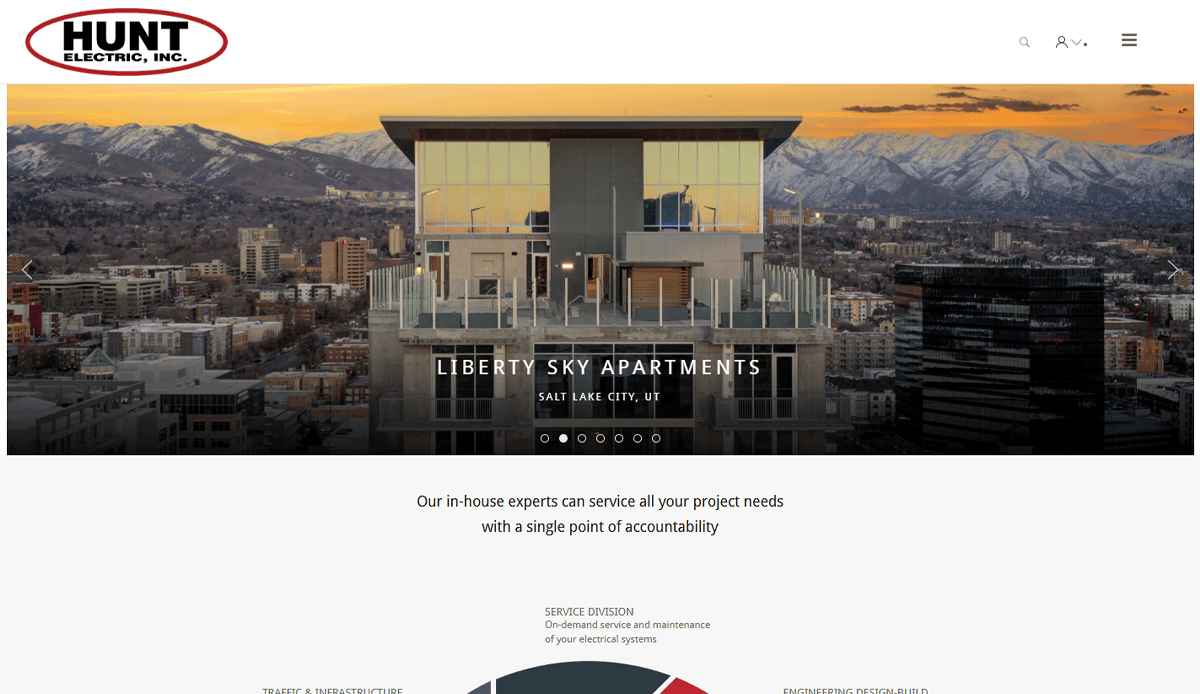
8. Hunt Electric – Salt Lake City, UT
- Exceptional electrician website structure with vertical menus
- Project filters for energy, healthcare, and data centers
- Engaging project visuals integrated with service descriptions
9. Cache Valley Electric – Logan, UT
- Overall design emphasizes legacy and innovation
- Fast loading across devices and screen sizes
- Detailed service area coverage across multiple states
10. Archkey Solutions – St. Louis, MO
- Focused on complex commercial installations and facility solutions
- Strong copywriting paired with large-format photography
- Highlights business growth and industry leadership
11. Terminal-Andrae – Milwaukee, WI
- Strong commercial services menu and intuitive layout
- Consistent design elements reinforcing brand strength
- Clean service-specific pages with SEO optimization
12. Kelso-Burnett – Rolling Meadows, IL
- Minimalist design with professional electrician website aesthetics
- Highlights decades of commercial and industrial expertise
- Clear CTA and user flow from homepage to service details
13. Ujamaa Power – Chicago, IL
- Modern design showcasing high-voltage commercial electrical work
- Responsive design with clean mobile experience
- Highlights company diversity and union affiliations
14. Karmer Electrical – London, OH
- Service area focus integrated into navigation
- Clear segmentation between residential and commercial clients
- Secure website with project request capabilities
15. Meade Electric – McCook, IL
- Commercial-focused homepage with large service CTAs
- Informative case study summaries with project specs
- Google My Business integration for local presence
16. Muth Electric – Mitchell, SD
- Strong industrial project section with deep content
- Easy access to online booking and bid requests
- Website features support for bilingual users
17. Faith Technologies – Menasha, WI
- Bold typography with motion-based section reveals
- Focused on electrical work across smart buildings and automation
- Well-executed case study section and timeline graphics
18. ERMCO – Indianapolis, IN
- Professional electrician website with clean interface
- Clearly marked safety certifications and training emphasis
- Compelling homepage storytelling with client testimonials
19. Rosendin Electric – San Jose, CA
- Comprehensive overview of electrical projects across the U.S.
- Interactive map of service areas and project footprint
- Commitment to inclusion, safety, and high-performance design
Ready to Power Up Your Electrical Website?
If you’re serious about generating more leads and presenting your business like a true professional, investing in custom electrician website design is one of the best ways to move forward. A responsive design, streamlined content, and strategic layout aren’t just technical upgrades—they’re revenue drivers.
Whether you’re launching a new website or improving your existing electrical contractor website, our design services are built around what matters most: growing your electrician business and delivering a better experience for your website visitors.
Let our design team help you turn your company’s website into a high-performing asset. Get started with our electrician web design services today.
Common Questions About Electrician Website Design, Answered
What makes an electrician’s website effective?
An effective electrician’s website clearly communicates services, builds trust with testimonials, and includes fast-loading pages, mobile-friendly layouts, and secure website infrastructure. Design for electricians should prioritize ease of navigation and lead generation throughout your website.
What website features should an electrical company include?
Key features include a strong homepage value proposition, service area maps, online booking tools, emergency contact buttons, commercial installations pages, and project showcases. These create an engaging website experience and boost website traffic.
How often should an electrical website be updated?
Your website’s design and content should be reviewed quarterly. Regular updates help ensure that your service descriptions, certifications, and images reflect current capabilities. This also supports better search visibility and business growth.
Why is a custom website better than using website builders?
While website builders offer convenience, they lack the flexibility and performance of custom website design. A professional-looking website with tailored features, fast load times, and optimized structure is essential for competitive electrical companies.
What role does Google My Business play in electrician web design?
Google My Business enhances local visibility. When paired with a well-optimized electrical company’s website, it helps drive calls and directions from search. Embedding reviews and linking your GMB profile improves trust signals throughout your website.
Are there examples of great electrician websites I can review?
Yes, our post on the 10 Best Electrician Website Designs includes standout website examples that highlight excellent content strategy, overall design, and user experience.
What is the value of minimalist designs?
Minimalist design improves clarity, reduces distractions, and enhances mobile usability. It helps website visitors focus on what matters—your electrician services, qualifications, and calls to action. This simplicity leads to more effective lead capture.
How does good design impact an electrical contractor website’s performance?
A memorable website improves SEO, builds credibility, and converts more leads. Key design choices—from responsive design to intuitive layout—support ongoing business growth and reflect your professionalism across all electrical work.
Should my website showcase past projects?
Yes, a professional website should include galleries or case studies of past electrical projects. These website highlights serve as proof of expertise and help build trust with potential clients considering your electrical solutions.
What are must-have elements for website design services?
Must-haves include custom branding, fast performance, optimized page structure, service-specific landing pages, and clear CTAs. Offering unique website showcases of your work sets your company’s website apart from the competition.

